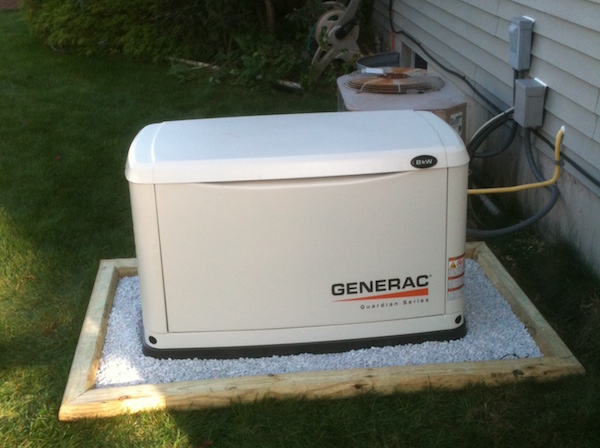
Many people have generators to light their barns or outdoor facilities, but they can also be used to power homes. If your home regularly encounters blackouts, power failures, and other electrical difficulties, it may be worth paying the cost of a home generator for a reliable backup option. However, there is some advice that you should follow to be sure you are getting the right generator and using it correctly.
Where to Use a Generator
This is first because it is most important. DO NOT USE A GENERATOR INDOORS. All internal combustion engines produce carbon monoxide gas that can leak out of the engine exhaust system and into your living space. Generators are most likely used during inclement weather when your home will be closed up. You can’t smell or see CO, and even opening doors and windows will not ensure the CO will be circulated out. You can eliminate the problem altogether by placing it outside.
Since generators are often needed during floods and power outages, the best idea is to situate one on top of posts or poles so that it is off the ground and receiving maximum airflow. However, this isn’t feasible for most people in most situations. Do your best to have it elevated–on a skid or a block–so that it can catch some wind and run without running too hot. Make sure to keep it away from water.
Ready to start your Generator Installation?
Find ProsWhat Size Do I Need?
If this is for an emergency, look at the labels on the lighting and appliances you would use and calculate how much power you would need. All appliances will have their power requirements printed on them. For lighting, bulb wattage indicates the power needed. It is best to choose a generator that has the capacity for more power than will actually be needed. This way, if you have miscalculated the necessary power or underestimated what appliances you need, you will still have remaining power.
Generators with Side-Valve Engines can be run for many days as long as the maintenance instructions are followed. Some have run for weeks except for brief daily shutdowns for refueling and changing of oil.
For Briggs & Stratton engines (GB prefix), change oil after first 5 hours of operation. Check oil level every few hours; clean around muffler, springs and linkage. Every 25 hours change oil if operating under heavy load or in high ambient temperature, service air cleaner pre-cleaner. Every 50 hours change oil. Every 100 hours service air cleaner cartridge, replace in-line fuel filter and replace/clean spark plug.
For Tecumseh engines (GT prefix), check oil level every 5 operating hours and before each use. Change oil after first 2 operating hours and every 25 operating hours thereafter, more often if operated in extremely dusty or dirty conditions. Check spark plug every 100 hours of operation. Clean foam air filter every 25 operating hours and replace paper air filter every 100 operating hours.
Plugging Things In
You can plug appliances directly into the generator. However, some can be professionally connected to a circuit breaker to power portions of a home. Be sure to hire a professional to do this. Do not plug the generator into an outlet to power the house. This is known as backfeeding, and presents a serious electrocution risk not only to you but also to anyone in your neighborhood or on the same power grid.
Powering Your Generator
The typical generator will be gas powered. When refueling, use the same good sense as when refueling a hot lawnmower. Allowing the generator to cool for a while is best so that spilled gasoline does not ignite from the engine’s heat. But if you are in a situation where waiting for the engine to cool is not possible, then be very careful not to spill any gasoline on the engine or exhaust.
 Staying Safe During a Home Power Outage
Staying Safe During a Home Power Outage  Protect Yourself: Don’t Lose Power This Winter
Protect Yourself: Don’t Lose Power This Winter  Electrical Wiring Project Checklist
Electrical Wiring Project Checklist  Adding a Home Wet Bar
Adding a Home Wet Bar  Upgrade Your Home Life
Upgrade Your Home Life 

Are You Familiar With This Topic? Share Your Experience.